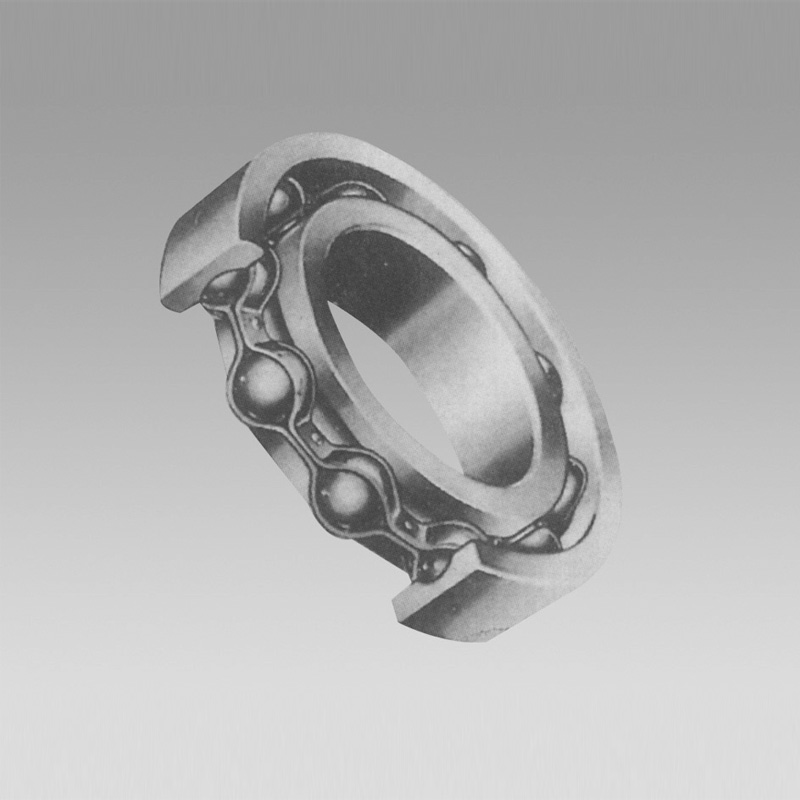
10 月 . 21, 2024 12:40 Back to list
Exploring the Advantages of Angular Contact Thrust Ball Bearings in Machinery Applications
Understanding Angular Contact Thrust Ball Bearings
Angular contact thrust ball bearings are an essential component in many mechanical systems, particularly in applications where axial loads must be supported in one direction. This unique type of bearing is designed to accommodate both axial and radial loads, making it an ideal choice for high-performance applications in various industries, including automotive, aerospace, and heavy machinery.
Design and Structure
Angular contact thrust ball bearings consist of a series of balls positioned at an angle to the axis of the shaft. This design allows the bearing to handle not only axial loads but also a certain degree of radial loads, depending on the angle of contact. The configuration typically includes inner and outer rings, which encompass the balls, and in most cases, a cage that keeps the balls evenly spaced.
The angle of contact is crucial for the bearing's performance. A larger angle allows for greater axial load capacity, making these bearings particularly suited for applications that involve heavy loads and require precision. Common angles used in these bearings range from 15 to 40 degrees, with the specific angle chosen based on the application's requirements.
Applications
Angular contact thrust ball bearings are widely used in various applications, such as
1. Machine Tool Spindles These bearings provide the necessary stability and load capacity for spindle applications in CNC machines, allowing for high-speed operations and precision machining.
2. Pumps and Compressors In pumping and compression systems, these bearings support axial loads generated by the impellers, ensuring smooth operation and prolonged service life.
3. Automotive Applications Angular contact thrust bearings are found in different automotive components, including gearbox assemblies and motor shafts, where they help manage the forces exerted on the transmission and improve overall performance.
angular contact thrust ball bearings

5. Robotic Systems Angular contact thrust bearings facilitate the smooth movement and position control essential for robotic arms and other automation equipment.
Advantages
The primary benefit of using angular contact thrust ball bearings is their ability to handle thrust loads effectively while also accommodating certain levels of radial loads. This dual capability allows for more compact designs in machinery, as fewer bearings may be needed to manage both types of loads.
Additionally, these bearings are known for their durability and reliability. They are typically designed to withstand higher speeds and loads compared to standard thrust bearings, making them an ideal choice for demanding applications. The availability of various materials, including stainless steel and ceramics, also enhances their performance in corrosive or high-temperature environments.
Installation and Maintenance
Proper installation and maintenance are crucial for maximizing the performance and lifespan of angular contact thrust ball bearings. It is essential to ensure that the bearings are installed with the appropriate axial preload, which is the force applied along the axis of the shaft to eliminate any play between the bearing components.
Regular maintenance, such as lubrication and inspection for wear, is also important. Many angular contact thrust bearings are designed to be sealed, reducing the need for frequent lubrication while still protecting against contaminants that could compromise their functionality.
Conclusion
In conclusion, angular contact thrust ball bearings are a critical component in various mechanical systems, providing the necessary support for axial and radial loads. Their unique design, widespread applications, and numerous advantages make them a popular choice across many industries. By understanding their features, advantages, and best practices for installation and maintenance, engineers and designers can leverage their capabilities to enhance the performance and reliability of their machinery.
Latest news
-
Unlocking Efficiency with Spherical Roller Bearings
NewsOct.29,2024
-
The Ultimate Guide to Thrust Ball Bearings
NewsOct.29,2024
-
The Power of Thrust Roller Bearings: Engineered for Excellence
NewsOct.29,2024
-
The Power of Deep Groove Ball Bearings for Your Application Needs!
NewsOct.29,2024
-
The Power and Performance of Cylindrical Roller Bearings
NewsOct.29,2024
-
High-Quality Ball Bearing Manufacturing Machines
NewsOct.29,2024
